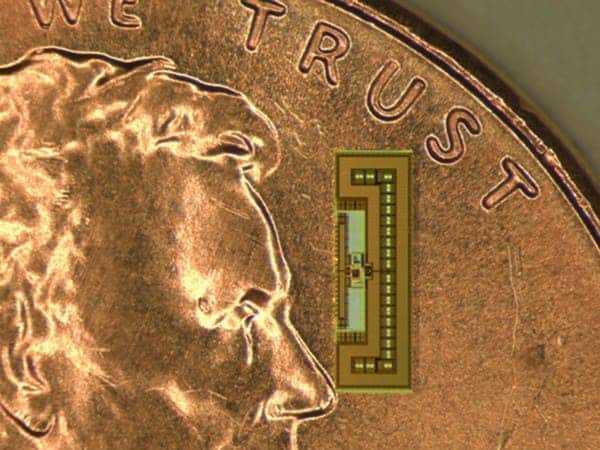Researchers at the University of Stanford and the University of California, Berkeley just presented a tiny radio, so small it’s the size of an ant, that could very well change the way we interact with technology in the future. What makes the device truly incredible is its ability to power itself without using an external power supply, like a plug or battery. Instead, the radio can harvest incoming radio signals and convert the absorbed energy into useful energy that powers the microelectronics inside. Basically, this tiny radio gets powered up simply by doing its job – communicating.
[RELATED] World’s smallest radio built using graphene
Even if the radio chip did need a battery, a single AAA battery has enough power to run it for more than a century, according to the researchers who presented their findings at the recently held 2014 Symposium on VLSI Circuits Digest of Technical Papers. In principle, the ant-sized radio functions just like a regular-sized one; the key difference is the scale. All the components you would find in a typical radio are included in this device as well, all miniaturized to fit on a single silicon chip. For instance, the antenna was designed to one-tenth the size of a Wi-Fi antenna—and yet, it runs at a fast speed of 24 billion cycles per second.
Because the device is so small and it can be integrated in current manufacturing processes, it can be built for only a few cents on a large scale. Why would you want a tiny antenna of this size? Well, the applications are numerous. If the device can be built using biocompatible components, it could be integrated into smart sensors that constantly relay important information related to bodily functions. Doctors would then have an immense and accurate flow of data that is 100% custom to the patient at hand. Medicine is increasingly heading into a space where treatments become personalized, so a device that can help with this sort of data would be extremely useful. The tiny radios could be integrated into anything from refrigerators, to light bulbs. Smart appliances that ‘know’ how to communicate with each other would help you, the home owner, to maximize energy savings, all while making life easier.









